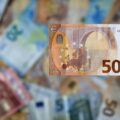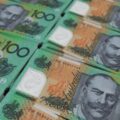Here’s Why EURUSD Reached Parity In 2022

Although it was a scenario that seemed less likely a few years ago, EURUSD reached parity on July 13th, 2022, for the first time since 2002. You probably already know that this year has been mainly about the US Dollar, with the global reserve currency rising against most of its peers, with only a few exceptions.
Euro weakness can be attributed to several factors, but there are 4 which stand out. If you are an FX trader actively trading EURUSD you probably wish to know more about what happens behind the charts, so you can make more information-based decisions in the future. Let’s take a look at these four factors.

Monetary policy divergence
The Federal Reserve started hiking interest rates well before the ECB, creating a positive interest rate differential. As monetary policy became restrictive in the US, market participants began favoring the Dollar, selling Euros.
Differences can be spotted in terms of how much both central banks are able to raise interest and tighten financial conditions. European countries such as Italy, Spain, Greece, and France have large debt-to-GDP ratios, and raising rates increases interest expenses. The private sector is impacted even more, given the higher risk premium that must be priced in.
FX trading activity
Carry trade on the EURUSD pair returned as a result of the interest rate differential between the Dollar and Euro. Traders can now initiate a sell transaction and benefit from the positive swap. This is a popular currency pair, available for trading with Easymarkets and most brokerages in the market.
There is a large order flow imbalance between sellers and buyers, which has led to a drop in the quote towards parity. The Dollar continues to be favored thanks to its global currency status, while the Euro is currently under pressure, given the looming energy crisis and recession fears.
Energy crisis in Europe
Unfortunately, Europe depends on Russian energy imports and right at the start of the war in Ukraine, relations between East and West deteriorated substantially. Countries such as Germany found themselves needing to make concessions, especially during the winter, with Russia not resuming gas exports.
The energy market remains tight even now during the summer, considering the hot weather prompted the use of fossil fuels for energy production. True, energy prices rose in the US as well, but the policy regarding energy transition is different on the other side of the Atlantic Ocean.
Making difficult decisions during this time of crisis is challenging, especially since they have to be accepted by all of the countries that are part of the EU.
Growing recession fears
Monetary and fiscal stimulus is waning, which makes analysts question whether the economy can really expand in the shadow of the large inflationary pressures. People have to cut spending and make priorities, which in itself raises concerns of a global recession.
In such conditions, the US Dollar acts as a safety net, compared to currencies such as the Euro or Sterling, which tend to benefit more during times of economic expansion.
Overall, it seems that the sentiment in theFX leans towards the USA, believing it will probably be less impacted by a potential recession, and that keeps EURUSD subdued even at the time of writing.




















